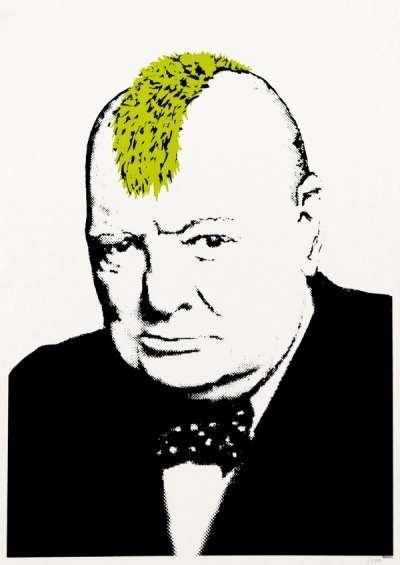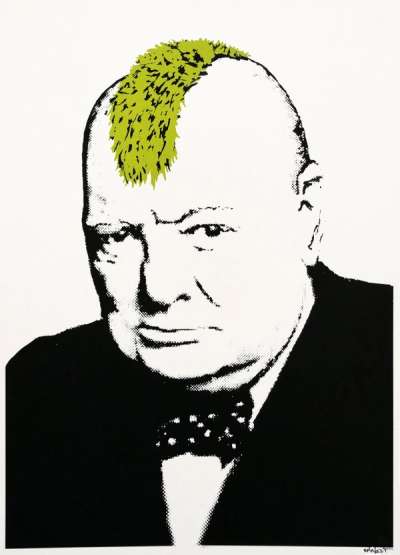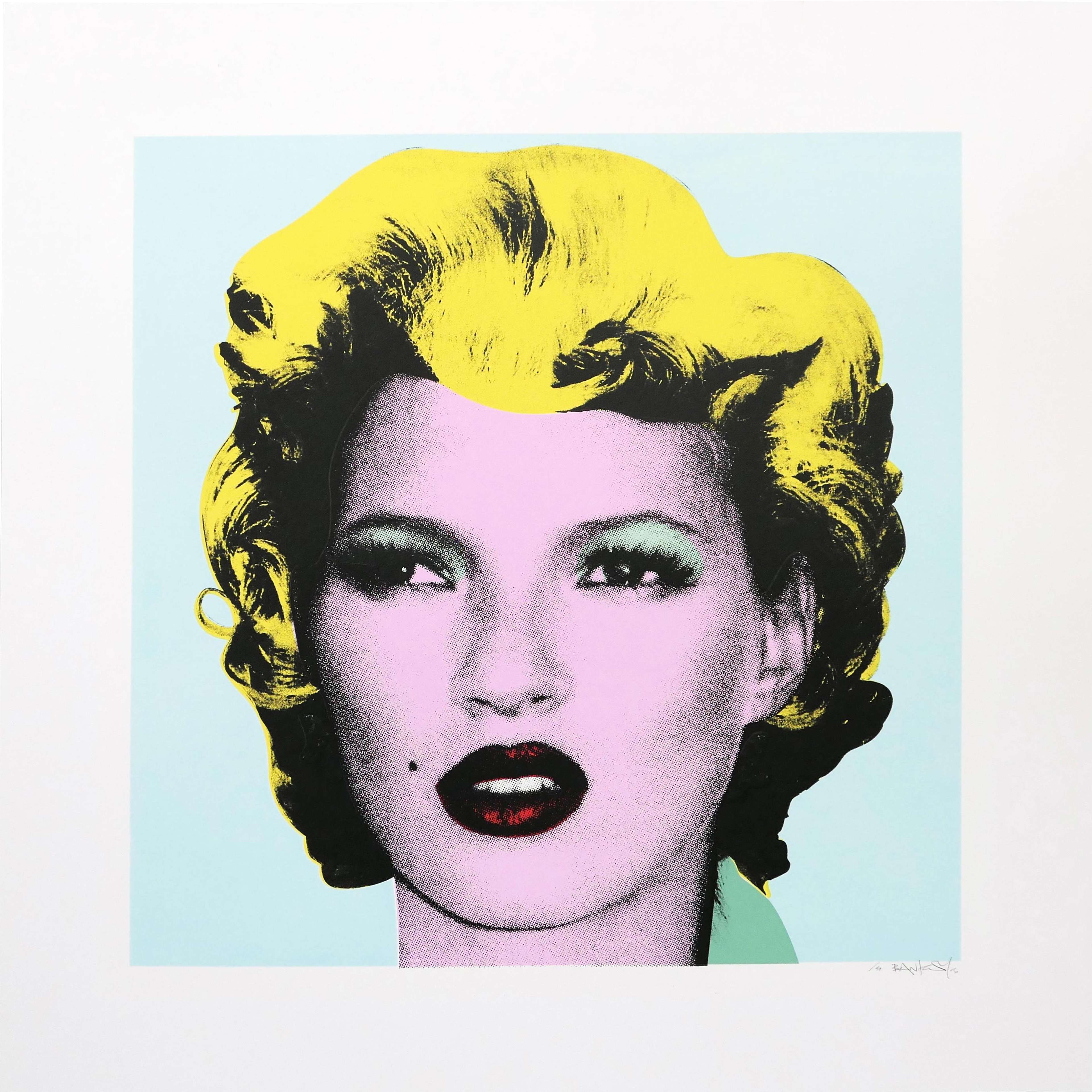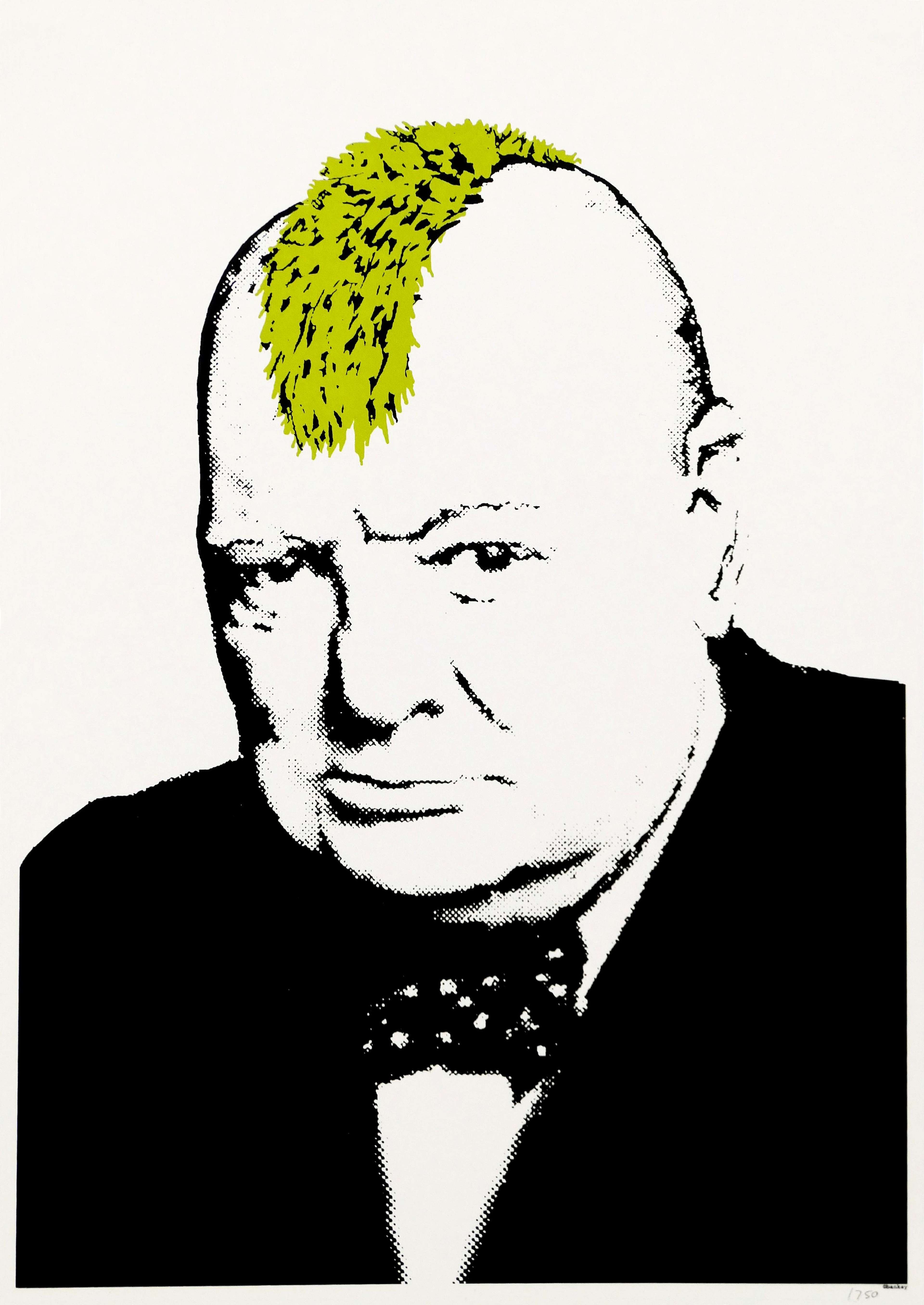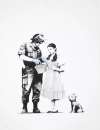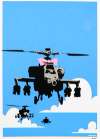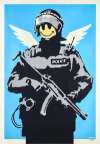Turf
War
Vandal by profession, Banksy's Turf War champions defacing political imagery as a form of protest. Reimagining the famous "Roaring Lion" portrait of Winston Churchill, Banksy gives the former Prime Minister a punk green mohawk. The design immortalises the real-life defacement of Churchill's statue during protests in Parliament Square in 2000.
Banksy Turf War For sale
Turf War Value (5 Years)
The Turf War series by Banksy features both signed and unsigned editions, which diverge significantly in value. Signed examples consistently command premiums, with hammer prices reaching up to £84000. Across the series, 37 total auction sales have been recorded, with an average annual growth rate of -3.84%. For collectors, edition type plays a pivotal role in value potential within this series.
Turf War Market value
Auction Results
| Artwork | Auction Date | Auction House | Return to Seller | Hammer Price | Buyer Paid |
|---|---|---|---|---|---|
 Turf War Banksy Unsigned Print | 15 Oct 2025 | Forum Auctions London | £6,375 | £7,500 | £9,500 |
 Turf War Banksy Signed Print | 1 May 2024 | Bonhams New Bond Street | £25,500 | £30,000 | £40,000 |
Sell Your Art
with Us
with Us
Join Our Network of Collectors. Buy, Sell and Track Demand
Meaning & Analysis
First shown at Banksy’s 2003 exhibition of the same name, Turf War depicts former British Prime Minister Winston Churchill with a lime green mohican. Turf War took place in a warehouse on East London's Kingsland Road; suspended from the ceiling, the homonymous painting after which the exhibition - and this print - is named was flanked by the artist’s iconic work, Flying Coppers.
The Turf War screen prints were released by Pictures on Walls shortly after the exhibition was held. The now-defunct London-based printhouse issued these first prints in two editions comprising 150 signed prints and 600 unsigned prints.
The original portrait of Churchill, upon which this print was based, is known as The Roaring Lion. It was taken by Armenian-Canadian photographer Yousuf Karsh on the 30th of December 1941, directly following a speech Churchill had delivered to the House of Commons at the Canadian Parliament in Ottawa. Considered one of the 20th century’s most significant political figures, Churchill is best remembered for his wartime triumphs rather than his involvment in colonial oppression. This irreverent Banksy print is all the more thought-provoking than The Roaring Lion given its pointed refusal to venerate Churchill in the way we are so used to seeing in the UK.
